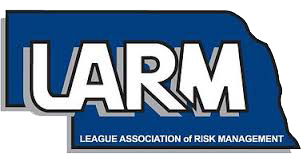
Automated external defibrillators (AED) have proven to be lifesaving equipment in our public spaces. Many Nebraska municipalities have them in their community centers, auditoriums, baseball complexes, swimming pool areas, and city/village offices. Since they’re portable and designed for a layperson to use, they’re vital for assisting a person who is experiencing cardiac arrest. Hopefully, every citizen in Nebraska could easily find an AED in time of need in a public space. If your community building is without an AED, prioritize putting it into your budget or finding a possible grant to purchase one. It’s not an inexpensive piece of equipment as you can plan on paying from $900 to $1200 for one AED. There are some essential points to remember when buying and maintaining an AED.
First of all, an AED must be FDA approved, so consult the manufacturer before purchasing to make sure it meets all federal requirements. In 2015 the FDA required that all AEDs be approved by them, and, as of February 2022, all AED accessories must also be approved by the FDA. The reason for these requirements is that in 2013, the FDA found that many AEDs installed at facilities were inoperable. Even now, you may have an AED that isn’t going to work when you pull it off the shelf to assist a victim. Check now to make sure the AEDs you have purchased and placed in your community buildings are ready to do the job they were made to do. Manufacturers have made AEDs easy to use for the average bystander, but they can still malfunction because of lack of maintenance or even just because of a dead battery.
The first thing you need to do is check the AED and its accessories for an expiration date. There should be at least two sets of AED pads in sealed packages with expiration dates on the packages. Check those to make sure they’re not out of date.
Any AED purchased before 2015 will more than likely not be approved by the FDA and should be replaced. It also may be time to replace the AED if the factory warranty has expired. There should be a status/service light that alerts you as to whether the AED is operable. It’s a good safety practice to look for an operational light when you walk by any AED. It might just need a new battery, but you don’t want to wait for an emergency to find out. You also need to check the AED to ensure it doesn’t show signs of cracks or damage (an errant basketball could have damaged the case).
Most importantly, to keep an AED in working order, refer to the manufacturer’s manual for information about maintenance on your particular AED.
It’s great to have an AED in your public building or area, but you can’t just put it on the wall and forget it. Keep easily accessible records as to when it was purchased and what maintenance has been done to it.
